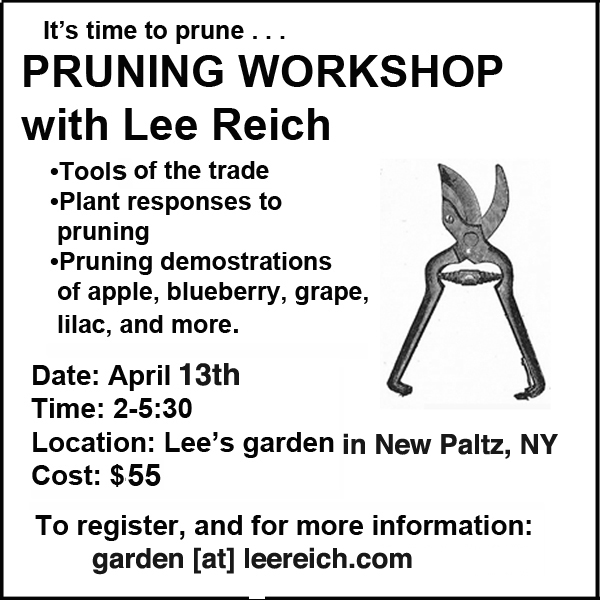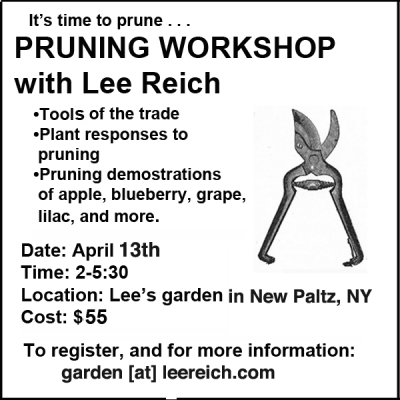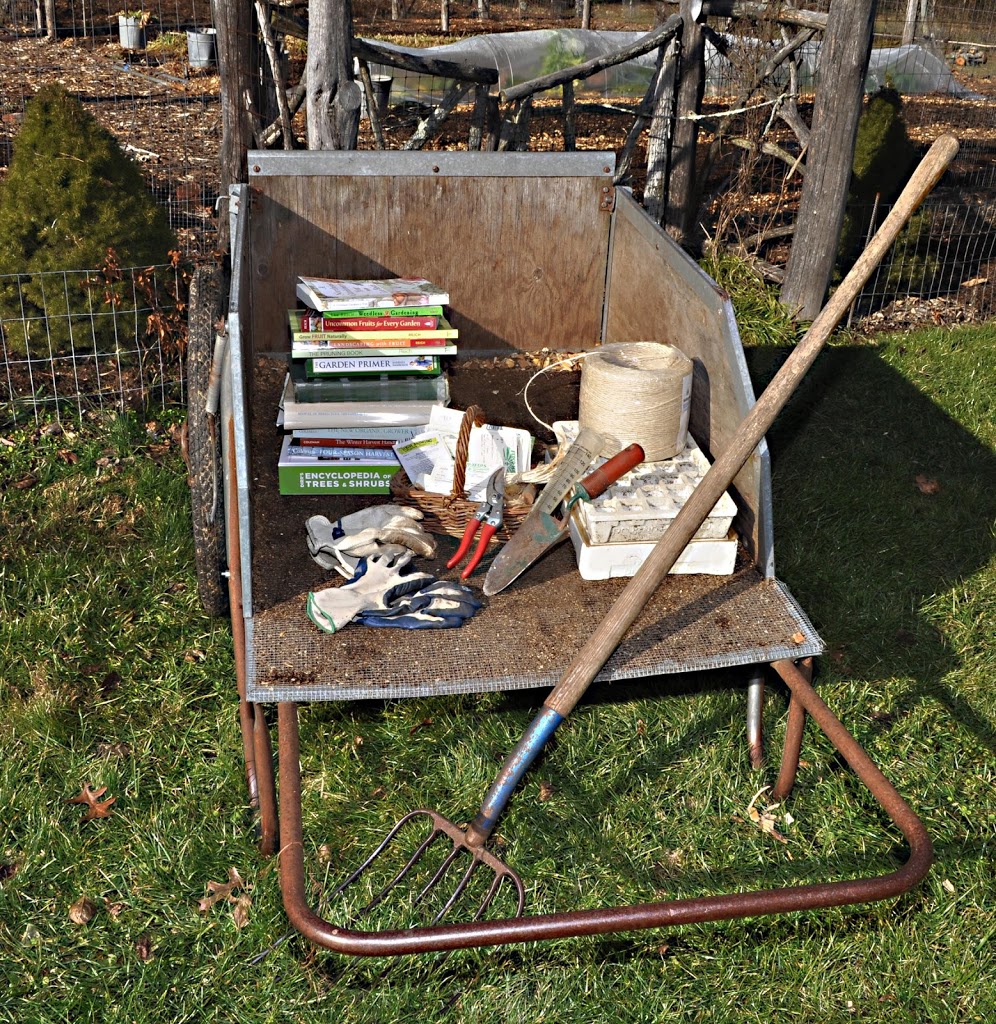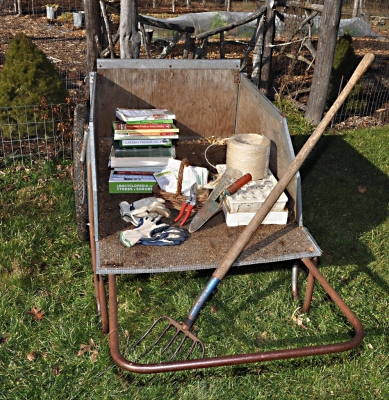Write in your heirloom favorites soon . . . the giveaway (see below) will end Wednesday, March 27th at 1 pm.
Good Gifts for Gardeners
/4 Comments/in Books/by Lee A. Reich What would be a good gift for a gardener at this gift-giving time of year? Every gardener has his or her special inclinations, gardenwise, so each of us warrants a special set of gift possibilities.
Still, certain expendable items are sure to please any and every gardener. Tops on my list would be a big ball of twine. Twine is useful for everything from lashing blue spires of delphinium and floppy tomato vines to stakes to tying pea vines to a trellis or grape vines to support wires. Not just any twine will do; best is twine made of natural fibre, such as hemp or sisal, so that it can be gathered up to be composted along with the plants it supported at season’s end.
Gloves are another expendable item great for gifts. Gloves made from leather and some synthetics last for years. Among my favorite gloves for everything from detail work like transplanting small seedlings to grabbing a pitchfork to pitch manure onto the compost pile are knit gloves with nitrile or latex coated palms and fingers. With rough use, the gloves only last a couple of seasons, if that, but they’re worth it for their grippiness, comfort, and hand protection. I save my leather gloves for colder weather or for rougher work such as pruning thorny rose and gooseberry bushes and grabbing firewood.
Organic gardening (a good idea and the essence of good gardening in general) conjures up its own special gifts. Straw, manure, hay, leaves, wood chips, and other organic (that is, living or once-living) materials are what put the “organic” into organic gardening. A pitchfork is the perfect tool for moving organic materials to the compost pile or on top of the soil. But choosing a pitchfork is not all that straightforward. I am the proud owner and frequent user of 4-, 5-, 6-, and 10-tine pitchforks. Each has its special use but if I were to own just one pitchfork, it would be the 6-tine fork.
If you’re going to use a pitchfork, you’re probably going to need something with which to move around all those bulky organic materials. A garden cart. Stoked full, a sturdy cart with high wooden sides and two large-diameter tires can move over 10 cubic feet or 1/3 cubic yard of material, up to about 400 pounds of weight. Please don’t buy me one; I own three.
A few other essential, welcome tools are a trowel, which any but a beginning gardener is sure to have, and hand pruning shears (my favorite is ARS although Felco and Pica are also very, very good). A rain gauge is also essential to know whether what sounded like an earth-drenching downpour really contributed to the one inch per week needed for best plant growth. Good sources for tools are Gemplers, A. M. Leonard, Charleys Greenhouse, Orchard Equipment Supply Co., and Gardener’s Supply Co.
Beginning gardeners will appreciate packets of basic seeds such as Black Seeded Simpson and Buttercrunch lettuce, Bush Blue Lake and Romano beans, French Breakfast radishes, and Green Arrow peas. More advanced gardeners start their own transplants so might appreciate especially good, but hard to find as transplants, varieties of tomatoes, such as Blue Beech, Belgian Giant, San Marzano, and Black Krim. Johnny’s Selected Seeds, Fedco Seeds, High Mowing, Pinetree Garden Seeds, Tomato Growers Supply Company, and Totally Tomatoes are among my favorite seed companies. For growing transplants, I recommend Gardener’s Supply APS, which waters seedlings automatically and gives each seedling its own home so they hardly realize when they’ve been transplanted. I already own about a dozen of them so don’t buy one for me, thanks.
How about a gift of some of the above catalogues? How about including some good nursery catalogues also? Some of my favorite nurseries are Hartmann’s, Raintree, One Green World, Cummins, Burnt Ridge, and Nourse.
————————————–
The best gift for the beginning gardener or for the seasoned gardener who wants to grow better is, in my opinion, a good book. Among my favorites are any of Elliot Coleman’s books about vegetable gardening, any of Michael Dirr’s books about trees and shrubs, Steven Still’s Manual of Herbaceous Plants, Hartmann & Kester’s Plant Propagation: Principles and Practices, my bible on plant propagation, and, for general gardening, Roy Biles’ The Complete Book of Garden Magic and Barbara Damrosch’s The Garden Primer. For entertaining and informative essays, there’s Green Thoughts: A Writer in the Garden by Eleanor Perenyi and The Principles of Gardening: A Guide to the Art, History, Science, and Practice of Gardening by Hugh Johnson.
Oh, and did I mention my books?: A Northeast Gardener’s Year (the what, when, and how for a wide range of gardening topics arranged, as appropriate, through the year), Weedless Gardening (especially good for vegetable gardening), Uncommon Fruits for Every Garden, Landscaping with Fruit, and Grow Fruit Naturally.
————————————————————–





